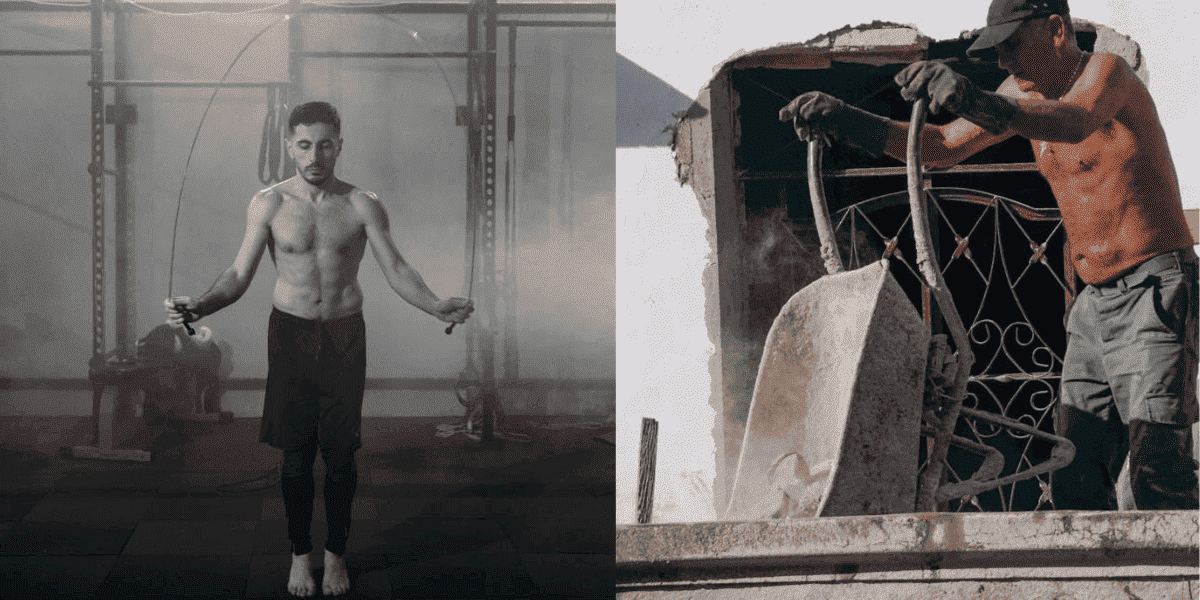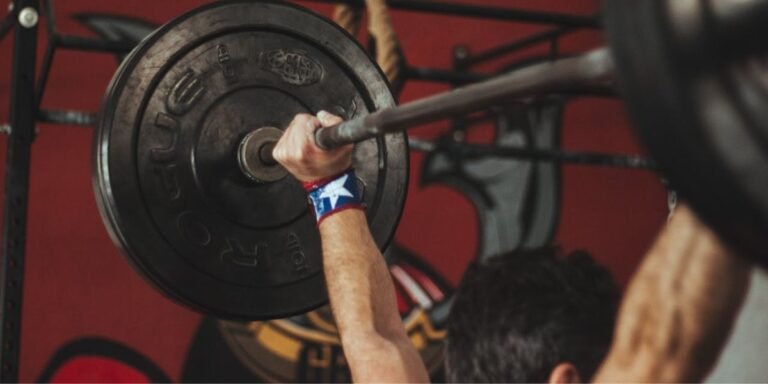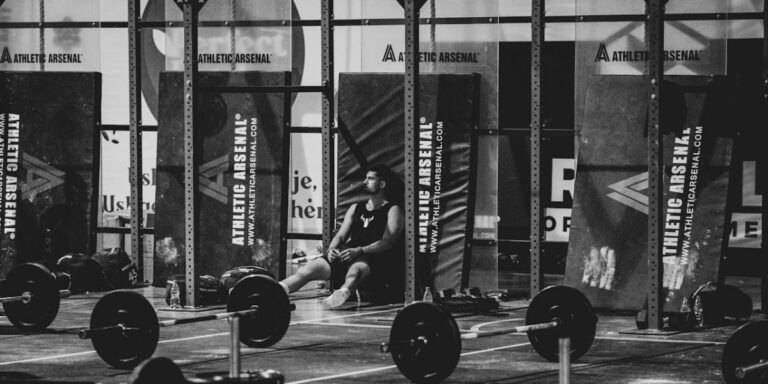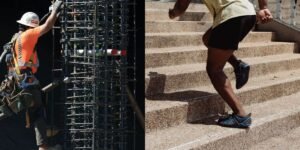After a long day at work, finding the energy for a workout can feel impossible. However, neglecting structured exercise might hold you back more than you think.
This guide breaks down simple and effective strategies to help tradies stay fit, increase energy, and prevent injuries, without overcomplicating your life.
We’ll cover resistance training and strength training, to build strength and stability and aerobic training (cardio) to increase endurance and recovery, so you can perform better on and off the job.
No complicated programs or unrealistic advice, just practical fitness strategies made for tradies.
Table of Contents
Are Tradies Fit?
It’s assumed that tradies who work physically demanding jobs are naturally fit and strong. After all, they lift, carry, and move heavy materials all day.
While most tradies are likely stronger than the average untrained person, this physical work doesn’t necessarily cover all aspects of fitness, especially cardiovascular health and flexibility, which can vary widely among tradies.
Research even suggests that work-related physical activity doesn’t provide the same health benefits as leisure-time exercise and isn’t a substitute for structured workouts.
A balanced fitness routine, including strength and cardio, can help tradies stay truly fit, address gaps in overall health, and reduce injury risks.
Resistance vs. Strength Training for Tradies
Training is essential for tradies to stay fit, strong, prevent injuries, and handle the physical demands of the job.
It will be highly beneficial in helping combat the repetitive physical stress from your work.
While resistance training and strength training are related, they serve different purposes. Understanding the difference will help you choose the right approach based on your goals.
Resistance Training: Endurance, Stability & Injury Prevention

Resistance training involves working against a force, such as weights, bands, or body weight, to improve muscle endurance, joint stability, and injury prevention.
It focuses on muscle tone, controlling movements, reinforcing weak muscle groups, and improving posture, which will all help tradies handle repetitive tasks without getting injured.
Lifting heavy materials at work does involve resistance, but it’s not the same as structured resistance training. Work tasks are often uneven, one-sided, and inconsistent, which can lead to muscle imbalances rather than strength gains.
If you struggle with aches, pains, or fatigue after work, resistance training can strengthen stabilizing muscles in the back, neck and shoulders muscles, reducing strain and lowering the risk of overuse injuries.
This study shows how resistance training can significantly reduce work-related pain like those mentioned above and improve your long-term joint health.
Strength Training: Power, Performance & Injury Resilience
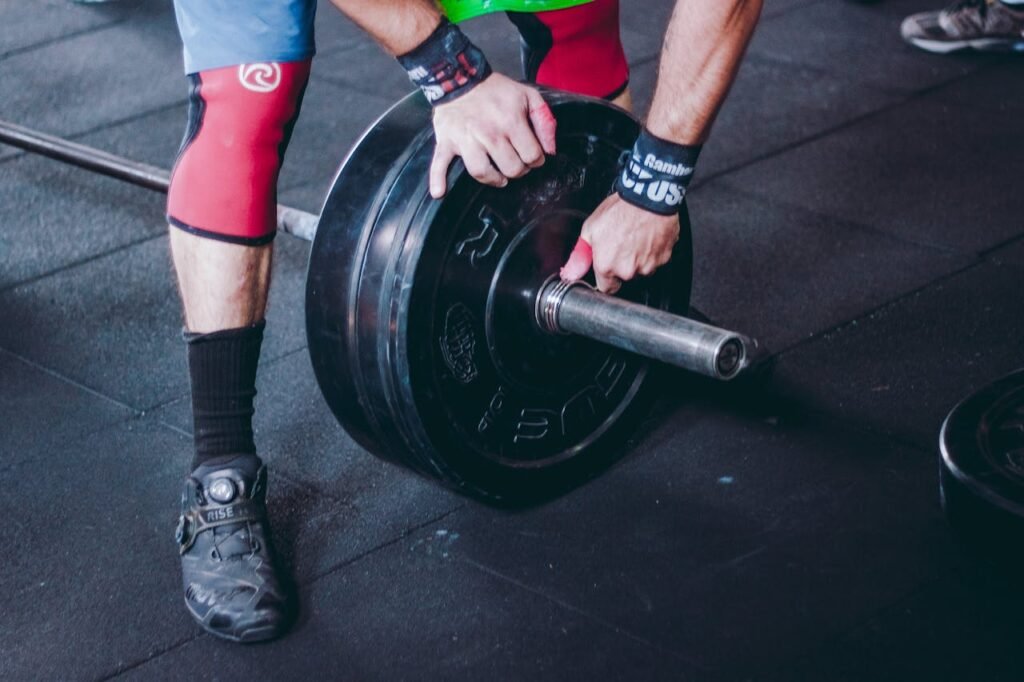
Strength training is a type of resistance training that focuses more on building raw strength and muscle power.
It involves progressively lifting heavier weights to improve muscle size, force production, and overall lifting capacity.
Structured strength training outside work can significantly help you lift heavier, and build overall muscle development and capacity, making physically demanding tasks easier and reducing fatigue and injury risk from sudden heavy loads.
Similar to resistance training, this study shows how strength training effectively reduces pain in critical areas like the lower back and shoulders, especially when combined with stretching and non-specific exercises (e.g. cycling or pilates) that support flexibility and endurance.
Which One Should You Focus On?
Both are important, but your goal determines which should be your priority:
- If you struggle with aches, pains, or repetitive strain injuries, focus more on resistance training to build endurance and stability.
- If you want to increase your overall strength and lifting ability, prioritize strength training with progressive overload.
- Ideally, a combination of both will keep you strong, mobile, and injury-free, ensuring you perform better on and off the job.
What is Aerobic training, and why is it essential for tradies
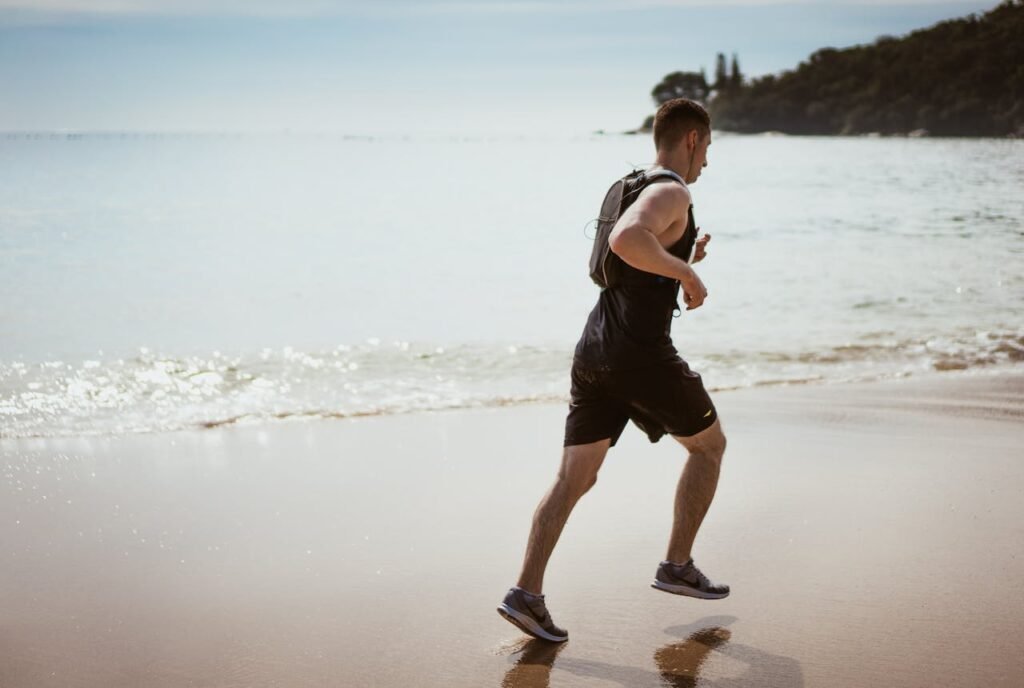
Aerobic training, also known as cardio, involves exercises at a steady pace, that increase your heart rate for an extended period.
Some simple examples are running, cycling, or swimming as they can all be done at low to moderate intensity.
Aerobic training is essential for cardiovascular health.
It helps regulate blood pressure, improves circulation, and enhances lung capacity, all of which contribute to more energy and stamina on the job and help you stay fit and healthy.
Studies suggest that aerobic exercise benefits heart health and improves sleep, mood, and immune function, making it a key component for staying fit and maintaining long-term well-being.
Check out my in-depth guide on the best cardio for construction workers if you want to learn more about aerobic training and cardio.
How tradies have stayed fit
A healthy lifestyle is possible even with a busy and physically demanding job.
I know plenty of people who manage to stay fit as tradies; some hit the gym regularly, others have a home gym set up, and a few stick to running or surfing as their primary form of exercise.
Whether you prefer weightlifting, cardio, or functional workouts, finding what works best for you and your schedule is essential.
Let’s break it down into the best three options :
- Morning Workouts:
Morning workouts are great for those who want to start the day right and feel fresh while working out or for those who wish to have evenings free for family or social activities.
If you already have an early start, you might have to get up earlier to fit in a quick session, which you can do effectively as long as you are a morning person.
- After-Work Sessions:
Working out in the evening is a solid option for those who prefer to unwind after work and take their time.
Signing up for a gym and going after work worked well for me.
After dealing with recurring injuries and fatigue, I found that regular workouts helped significantly.
I invested in a personal trainer and focused on strength training and running, which gave me something to look forward to after work.
- Weekend Training:
If your weekdays are too packed, you can focus on more intense sessions over the weekend. The training can be a mix of strength training or cardio sessions.
Ultimately, it’s your choice, depending on your schedule and personal preference.
Common Fitness Challenges for Tradies (With Solutions)
If you’re already thinking of a reason to get out of it, hang tight!
You’ll see that there are solutions for any challenges, and your progress is totally within reach.
Here are some ways to overcome your fitness challenges and some of the barriers you may face when it comes to improving your fitness :

Physical Exhaustion ( too tired )
Solution: Lighter workouts and build consistency.
While you may feel too tired after work, exercising has been proven to increase your energy and vitality while decreasing fatigue.
However, it’s not just your muscles that get tired—your nervous system also becomes fatigued from repetitive, demanding tasks, impacting your overall energy, concentration, and recovery.
Begin with lighter workouts, avoiding heavy lifting and keeping the volume of sets low, which helps your body and nervous system adapt without additional strain.
Consistency is key.
Ensure adequate rest and recovery, including quality sleep, to allow your nervous system to recover fully.
Over time, gradually increase the intensity and volume of your sessions as you build resilience.
Nutrition also plays a huge role. Fuel your body with the right foods to support energy levels and prevent burnout.
Stress management techniques, like deep breathing or stretching, can also help alleviate nervous system fatigue.
Time Constraints (no time)
Solution: Focus on short, effective workouts.
You don’t need to spend hours at or even go to a gym. If you have some weights at home, you can use them for a quick and efficient workout.
Resistance training just once or twice per week is enough to see results.
Depending on your current level, as long as you train to muscular fatigue, you will see improvements or maintain your strength.
All it takes is 30 minutes to an hour each week, and you’re up and running.
You can find more information here, a good review about having no time to lift.
Inconsistent Schedule
Solution: Having a flexible workout plan.
Have a plan B for those days when your schedule changes, like shorter full-body workouts.
For example, on busy days or weeks, do a 20-minute full-body workout instead of your usual workout, which might be 40 minutes long.
If you can’t hit the gym, another easy solution is to do a quick bodyweight circuit at home or squeeze in some stretches and mobility work to keep the ball rolling.
Soreness and Injuries
Solution: Focus on recovery and mobility.
If you have serious injuries, you should always see a trained professional; a physiotherapist or chiropractor will provide the necessary treatment.
If you experience any pain or discomfort during your workout or at work, it’s important to stop immediately and assess the situation.
For example, if you feel sharp pain in a joint such as the knees, shoulders, or elbows or if you notice a muscle strain, like a pulling or tearing sensation in a muscle, it’s important to stop.
These types of pain could be signs of an injury, and continuing to push through can make it worse. Listening to your body and giving yourself time to rest and recover can help prevent long-term damage.
For any non-serious soreness, like delayed onset muscle soreness (DOMS) or general work-related aches, take a few lighter days in your training by reducing the intensity or volume.
Remember, rest days are essential for avoiding burnout, so working out 3-4 times per week is a good balance of recovery days to hard days.
Effective Exercises for Tradies

When planning your workouts, focus on movements that build strength and stability.
As a tradie, your body already handles physically demanding tasks daily, making staying fit challenging.
It is important to choose exercises that complement your work without overtraining the muscles, which will help improve performance on the job.
All exercises that challenge your body contribute to your overall improvement.
Here are a few basic exercises and how they relate to work-related tasks:
| Exercise | Description |
| Squats | Legs and Core: Increasing your ability to lift heavy materials. |
| Deadlifts | Full-body strengthening: This closely relates to safely lifting materials from the ground. Think of how many “deadlifts” you already do each day. |
| Rows | Back: Helpful for carrying or manoeuvring heavy tools and materials. |
| Pull-Ups | Back: Builds overall upper body strength, helping with on-site physical tasks like pulling movements or when climbing things like scaffolding. |
| Overhead Press | Shoulders: Strengthening them will reduce shoulder strain and fatigue. The muscles used when lifting materials or tools overhead. |
| Push-Ups | Chest and Shoulders: Builds upper body strength, improving your ability to move equipment or push a wheelbarrow. |
| Lunges | Legs: Similar to stepping motions or moving through uneven terrain at work while carrying weight. |
| Farmer’s Walk/Carry | A compound movement that improves grip strength and overall strength: Vital for carrying heavy buckets or equipment across the job sites. |
Important note:
These are just a few examples. Listen to your body and avoid overworking certain muscle groups.
If you’ve been carrying or lifting materials all day, avoid exercises like farmer’s walks or heavy deadlifts at the gym.
Instead, focus on other movements that build overall fitness and strength (like an accessory exercise) without repeating work-specific tasks. Or choose to do your aerobic exercise or cardio that day instead.
Balance is key.
Exercise Technique
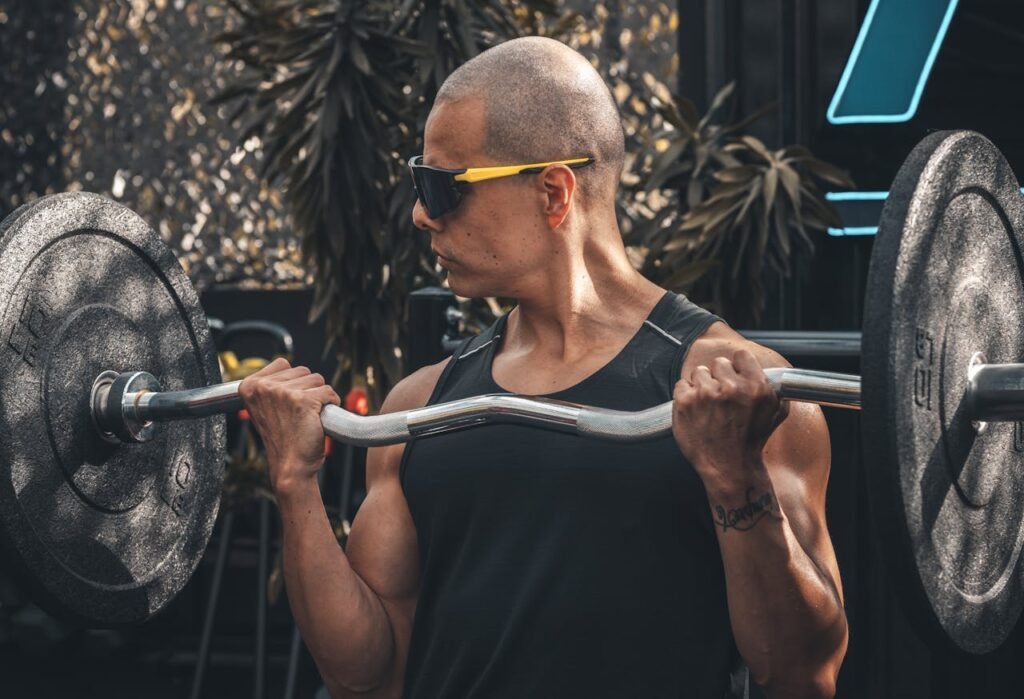
It’s crucial to focus on proper technique when doing exercises.
One way to master your form is to watch short videos on YouTube and to take notes of your body positioning and the cues ( for example, “Drive through your heels” when squatting).
Then, either look in the mirrors at the gym or film yourself performing the exercise and compare the two.
Another way is to learn from a personal trainer (PT) or have a friend watching.
This guidance can help you understand correct movement patterns, preventing you from rushing into heavy weights too soon.
The same thing applies to your cardio and aerobic exercise, where running technique or swimming technique can affect your efficiency and risk of injury.
Progressive Overload
Before you start, it’s essential to understand progressive overload.
The key to your gains and the primary way to consistently improve is to gradually increase weights, repetitions, or intensity, challenging your muscles more each time.
Muscles will then adapt, growing bigger and stronger over time. This approach helps prevent plateaus and enhances overall performance.
Push, Pull and Legs training split (PPL), for Trades
If you are thinking of signing up to a gym for your strength or resistance training here are a few things you should know about different training splits.
There are many types of training splits, but a Push, Pull, and Legs (PPL) training split is a good one for tradies and an easy one to learn.
This workout structure targets all major muscle groups while ensuring proper recovery between sessions.
This training split offers flexibility and efficiency, fitting well into a busy work schedule while supporting long-term fitness goals.
For tradies, PPL helps build strength in the key areas around pushing, pulling, and leg movements, which are critical for daily work tasks.
It also reduces the risk of injury by promoting balanced muscle development, adequate recovery time and progressive overload helps ensure continuous improvement over time.
Example workout plans
Here is a workout plan for tradies. It uses some of the exercises mentioned above and adds some accessory ones to give you a good example.
Ideally, you want a rest day between each session, but if necessary, it could be done three days in a row.
If you’re untrained or find some of these exercises too challenging, consider starting with regressions or easier variations before progressing to the full movements.
Day 1: Push (Chest, Shoulders, Triceps)
| Exercise | Sets x Reps | Focus |
| Warm-up – Dynamic Stretches | 5-10 minutes | Warm up your shoulders and upper body. |
| Bench Press | 3 x 8-10 | Chest, Triceps |
| Dips | 3 x 8-10 | Shoulders, Chest, Triceps |
| Dumbbell Incline Press | 3 x10-12 | Upper Chest |
| Overhead Press | 3 x 8-10 | Shoulders, Chest |
| Lateral Raises | 3 x 10-15 | Lateral delt (side of your shoulder) |
| Plank | 3 x 30-60 seconds | Core |
| Side plank | 3x 20-30 seconds | Core |
Day 2: Pull (Back, Biceps, Core)
| Exercise | Sets x Reps | Focus |
| Warm-up – Dynamic Stretches | 5-10 minutes | Upper body |
| Deadlifts | 4 x 5-8 | Back, hamstring, glutes |
| Pull-ups or Lat Pulldowns | 3 x 6-10 | Back, Biceps |
| Bent-Over Rows | 3 x 8-12 | Back |
| Barbell/Dumbbell Bicep Curls | 3 x 10-12 | Biceps |
| Single-Arm Dumbbell Row | 3 x 8-12 | Back, Biceps |
| Face pulls | 3 x 8-10 | Rear dealt, traps and rhomboids |
| Side plank | 3x 20-30 seconds | Core |
Day 3: Legs (Quads, Hamstrings, Glutes)
| Exercise | Sets x Reps | Focus |
|---|---|---|
| Warm-up – Dynamic Stretches | 5-10 minutes | lower body |
| Hack Squat machine | 3 x 8-12 | Quads, Glutes |
| Hamstring Curls | 3 x 10-15 | Hamstrings |
| leg extensions | 3 x 8-10 | Quads |
| Lunges | 3 x 8-12 (per leg) | Quads, Glutes |
| Bulgarian split squat | 3 x 6-8 | Glutes, Quads, Hamstrings |
| Hanging Leg Raises | 3 x 8-10 | Core |
A Quick Intro To Nutrition For Tradies
People often overlook the importance of proper nutrition for tradies. Yet, it’s essential for staying fit and healthy, even if you don’t work out regularly.
Focusing more on quality lean proteins, complex carbs (not sugar), healthy fats, and fruits and vegetables can make a huge difference in your health.
Meal prepping and smart snacking can transform your nutrition habits.
If you want to learn how to eat healthy, to feel more energised at work, and to recover probably, you can see my full guide about Nutrition for Construction Workers. where I go into detail about food and give some good examples.
Summary
Staying fit as a tradie doesn’t have to be complicated.
Consistency is key. Even small changes will lead to significant results over time.
Focusing on strength training, your favourite type of cardio, making smart nutritional choices, and finding a routine that fits your busy life can improve your fitness, reduce injuries, and improve your overall health.
Now that you know what works best for you, take action. Sign up at your local gym, start a new routine, go for a run, or even commit to a few bodyweight exercises each day.
Your health and performance at work will only benefit you.
If you found this guide helpful check out my article on Cardio for Construction Workers if you want to learn more about cardio as we only really touched on the subject here.
Let’s make staying fit part of every tradie’s lifestyle.
Keep reading:
References
- National Center for Biotechnology Information. Effects of resistance exercise on musculoskeletal pain, injury, and rehabilitation. PubMed Central. 2020. Available at: https://pmc.ncbi.nlm.nih.gov/articles/PMC9045238/
- American College of Sports Medicine. Resistance training is medicine: Effects of strength training on health. Curr Sports Med Rep. 2012;11(4):241-247. Available at: https://journals.lww.com/acsm-csmr/fulltext/2012/07000/resistance_training_is_medicine__effects_of.13.aspx
- National Center for Biotechnology Information. Aerobic exercise and cardiovascular health in the elderly. PubMed Central. 2020. Available at: https://pmc.ncbi.nlm.nih.gov/articles/PMC9206544/
- National Center for Biotechnology Information. The influence of resistance exercise on the prevention of musculoskeletal injuries in physically demanding jobs. PubMed Central. 2014. Available at: https://pmc.ncbi.nlm.nih.gov/articles/PMC4273961/
- Cleveland Clinic. The many benefits of a cardio workout. Cleveland Clinic. 2021. Available at: https://health.clevelandclinic.org/the-many-benefits-of-a-cardio-workout
- National Center for Biotechnology Information. The role of exercise in reducing cardiovascular disease risk in adults. PubMed Central. 2009. Available at: https://pmc.ncbi.nlm.nih.gov/articles/PMC2465144/
- National Center for Biotechnology Information. Cardiovascular benefits of aerobic exercise in the elderly. PubMed Central. 2020. Available at: https://pmc.ncbi.nlm.nih.gov/articles/PMC8449772/
- National Center for Biotechnology Information. Aerobic exercise and cardiovascular health in the elderly. PubMed Central. 2020. Available at: https://pmc.ncbi.nlm.nih.gov/articles/PMC9206544/
- National Center for Biotechnology Information. The effects of aerobic exercise on heart health and fitness in older adults. PubMed Central. 2018. Available at: https://pmc.ncbi.nlm.nih.gov/articles/PMC5983157/
- National Center for Biotechnology Information. The impact of aerobic exercise on overall health and fitness in the elderly. PubMed Central. 2014. Available at: https://pmc.ncbi.nlm.nih.gov/articles/PMC4215195/

